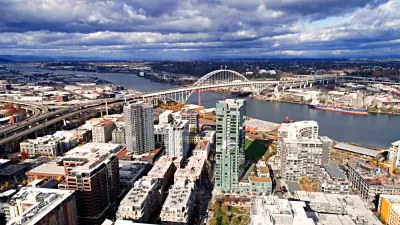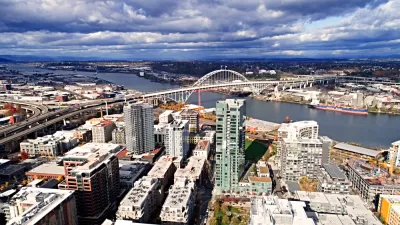The portion of Portland's Comprehensive Plan devoted to missing middle housing spurred a lawsuit that held up the plan until January of this year.

In a story we missed back at the end of January, the Oregon Court of Appeals upheld the Portland 2035 Comprehensive Plan with a ruling in the case Multnomah Neighborhood Association v. Land Conservation and Development Commission, according to a new release posted on the city of Portland website.
The news release explains the genesis of the lawsuit:
The Oregon Department of Land Conservation and Development (DLCD) approved the plan in December 2017. In March of 2018, the Oregon Land Conservation and Development Commission (LCDC) voted to reject six appeals that were filed to block elements of the plan. The Multnomah Neighborhood Association subsequently filed an appeal of the LCDC decision in September 2018.
The appeal took umbrage with the city's missing middle housing policy, which "encourages the City to consider zoning decisions to allow more duplexes, triplexes, fourplexes, accessory dwelling units, and small multi-unit or clustered residential buildings." The city's Residential Infill Project, detailed in news shared by Planetizen in September 2019, is intended to implement the missing middle housing policy communicated in the Comprehensive Plan.
As noted in the press release, Portland's Central City 2035 plan is still facing a legal dispute. "In a separate court decision [the Central City 2035 plan] was recently sent back to City Council for further consideration," according to the news release.
FULL STORY: Portland’s 2035 Comprehensive Plan affirmed

Planetizen Federal Action Tracker
A weekly monitor of how Trump’s orders and actions are impacting planners and planning in America.

Congressman Proposes Bill to Rename DC Metro “Trump Train”
The Make Autorail Great Again Act would withhold federal funding to the system until the Washington Metropolitan Area Transit Authority (WMATA), rebrands as the Washington Metropolitan Authority for Greater Access (WMAGA).

The Simple Legislative Tool Transforming Vacant Downtowns
In California, Michigan and Georgia, an easy win is bringing dollars — and delight — back to city centers.

The States Losing Rural Delivery Rooms at an Alarming Pace
In some states, as few as 9% of rural hospitals still deliver babies. As a result, rising pre-term births, no adequate pre-term care and "harrowing" close calls are a growing reality.

The Small South Asian Republic Going all in on EVs
Thanks to one simple policy change less than five years ago, 65% of new cars in this Himalayan country are now electric.

DC Backpedals on Bike Lane Protection, Swaps Barriers for Paint
Citing aesthetic concerns, the city is removing the concrete barriers and flexposts that once separated Arizona Avenue cyclists from motor vehicles.
Urban Design for Planners 1: Software Tools
This six-course series explores essential urban design concepts using open source software and equips planners with the tools they need to participate fully in the urban design process.
Planning for Universal Design
Learn the tools for implementing Universal Design in planning regulations.
Smith Gee Studio
City of Charlotte
City of Camden Redevelopment Agency
City of Astoria
Transportation Research & Education Center (TREC) at Portland State University
US High Speed Rail Association
City of Camden Redevelopment Agency
Municipality of Princeton (NJ)





























